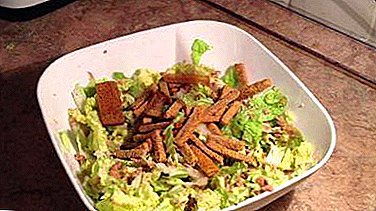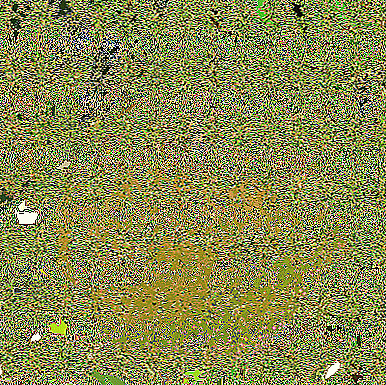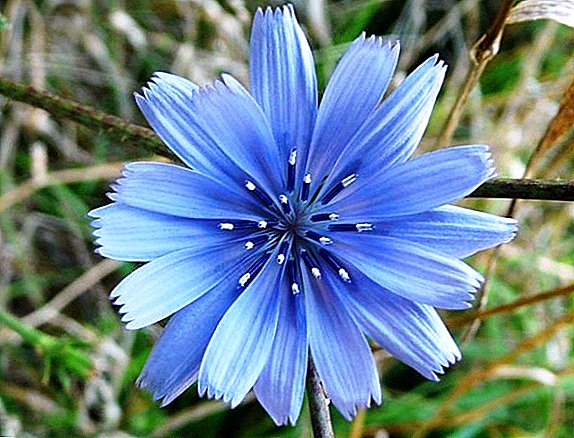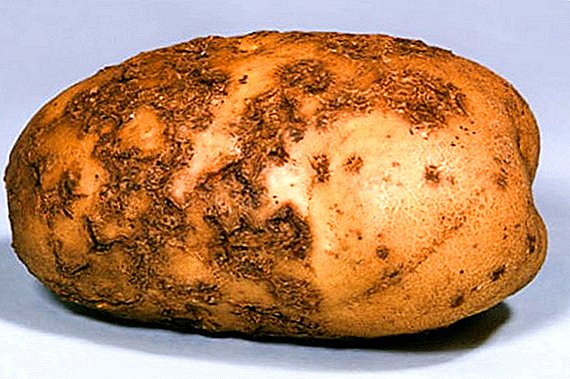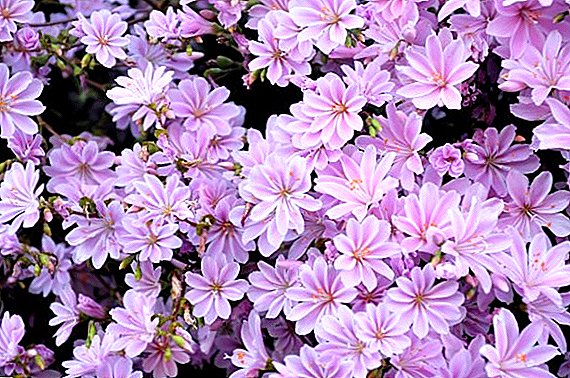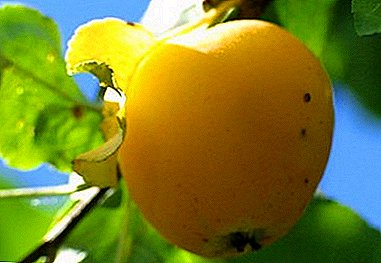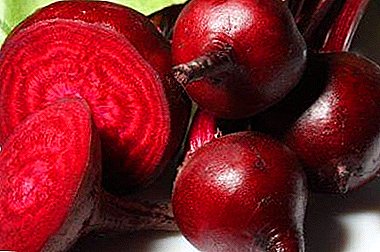
Feces are formed as a result of the passage of food through the stomach and intestines of undigested food debris. In the process of processing products in the body, some of the substances are not absorbed, and is displayed along with the feces. Normally, fecal discharge of a person is of brown color of different shades and uniform consistency, without major impurities.
The color and density of feces are differently affected by both consumed foods and human health. Whether feces are stained after eating beets, what color it becomes and what it looks like, we will look at the article.
How does eating vegetables affect the color of feces?
Beetroot has a rich red-purple color due to the presence in its composition of special substances - betacyanines. Dyeing pigments of the plant are processed and discolored, getting into the stomach, and then passing through the internal organs and intestines.
Natural causes of color change
- Metabolism and absorption rate. With a different level of metabolism, the dye pigments of the beet or completely split, then the selection does not stain, or partially do not have time to process, and are displayed together with the feces, coloring it in burgundy shades.
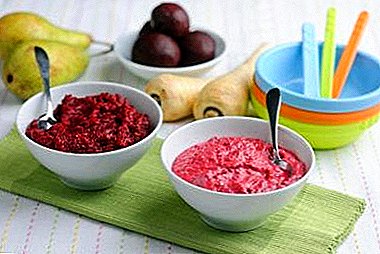 Individual ability of the body to digest pigments. In a certain percentage of people in a normal state, there is a lack or absence of bacteria that break down the coloring pigments of beets. In this case, after consuming the root, the stool stably stains in a beet color, they are very similar to blood.
Individual ability of the body to digest pigments. In a certain percentage of people in a normal state, there is a lack or absence of bacteria that break down the coloring pigments of beets. In this case, after consuming the root, the stool stably stains in a beet color, they are very similar to blood.- The amount of beet eaten. When eating vegetables, infrequently and in small quantities, feces may remain unchanged. With an increase in food volumes of beets, daily consumption of dishes or juices from it, excess dyes will be displayed along with feces (whether you can eat a vegetable every day, what is the rate of consumption and what threatens to exceed it, we told in our article).
How are stool stained?
The feces after the beets can be colored in different shades of red - from pink to maroon, and even black. The degree of staining of feces affects:
- saturation of different varieties of root vegetable coloring pigments;
- combination with other products and medicines;
- possible disturbances in the gastrointestinal tract.
Attention! Beets have a slight laxative effect and help with constipation. Use with caution when prone to diarrhea and intestinal disorders!
Can they be red (pink)?
- After eating light varieties of vegetables.
- When combined with other vegetable coloring products red shades (tomatoes, red berries).
- From the simultaneous use of the root with antibiotics or potassium tablets.
Why are black?
- When using dark varieties of beets in large quantities.
- As a result of simultaneous use with products that have a lot of dark coloring pigments:
- prunes;
- red grapes;
- blueberries;
- black currant;
- strong coffee;
- sausage products.
- When combined plants with certain medications:
- iron-containing agents;
- activated carbon;
- bismuth preparations;
- antibiotics.
- From combining with low-quality alcohol.
Why are there pieces of undigested vegetable?
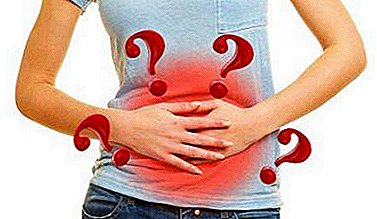 High fiber content in the plant. When consumed in large quantities, the fiber of the beet is not partially digested, and then pieces of the root crop may be present in the feces. If the state of health is normal, there is no discomfort, then the presence of pieces of beet in the feces is considered acceptable.
High fiber content in the plant. When consumed in large quantities, the fiber of the beet is not partially digested, and then pieces of the root crop may be present in the feces. If the state of health is normal, there is no discomfort, then the presence of pieces of beet in the feces is considered acceptable.- Intestinal disorders. Due to the laxative effect, consuming beets in combination with spicy food, a large amount of fruits and vegetables sometimes leads to diarrhea, incomplete digestion and the appearance of plant pieces in excrement. Such a state in isolated cases is not a pathology and is carried out with the observance of hygiene and a reasonable combination of products.
- Failures in the digestive system. Large undigested portions of beets and other food in the feces, poor health and a violation of the chair for a long time signal problems in the body.
Stool after eating root vegetables in children and adults - what's the difference?
In young children, the digestive system is not developed and reacts faster to changes in the diet. The younger the child, the more difficult the child's body copes with excessive amounts of beet fiber. At the first introduction of prikorma beets displayed with feces almost unchanged. In older children, the chair after the root is liquefied, is colored in shades of red and contains pieces of undigested vegetable.
As a child grows, more enzymes appear that help in the processing of beets., the system of food digestion is fully formed, and the vegetable begins to be digested in large volumes.
What testifies to health problems?
Feces after beets indicate possible malfunctions in the body in the following cases:
 Long-term discoloration of feces after beets, two-color feces (part red, part normal) - a consequence of insufficient digestion. Perhaps as a result of eating disorders, with frequent overeating, when the intestinal walls are clogged and work unsatisfactory.
Long-term discoloration of feces after beets, two-color feces (part red, part normal) - a consequence of insufficient digestion. Perhaps as a result of eating disorders, with frequent overeating, when the intestinal walls are clogged and work unsatisfactory.- Loose stools with pieces of beetroot and undigested portions of other foods indicate disruption of the bowels.
- The appearance of a too light shade of feces after beets indicates failures in the gallbladder, pancreas and liver.
- Blood in the feces indicates internal damage to the digestive tract.
Is it possible to distinguish the blood from the veins of the root?
What do feces look like?
After beet, stool texture becomes softer than usual.. Color varies from the usual brown to light or maroon. Small blotches of undigested vegetable are allowed. The general state of health at the same time is normal, the normal color of feces is restored in a few days.
Does blood have any influence on color characteristics?
- Feces of black color with a strong odor, tarry consistency, combined with a sharp deterioration in health, suggests possible internal bleeding in the upper digestive tract.
- The heterogeneous structure of the discharge with streaks of bright red blood indicates bleeding in the lower intestines.
- Drops and blood trickles on top of the feces are a sign of hemorrhoids, cracks in the anus.
When bleeding occurs, besides staining of the stool, additional symptoms occur. These include:
- abdominal pain;
- nausea or vomiting;
- weakness and dizziness;
- pallor;
- pressure drop (how beet eating affects pressure, read here).
In children:
- increased anxiety or lethargy;
- a sharp cry and refusal to eat.
Such symptoms indicate acute inflammatory diseases of the digestive system. You should visit specialists as soon as possible, pass tests and be examined.
Important! When a black, resinous feces with a foul odor, with sharp pain, loss of pressure and high temperature, you should immediately consult a doctor!
A photo
We described above how beets affect the feces of adults and children, now we can see it more clearly in the photo.



How many days does the product leave the body?
The burgundy color of feces manifests itself a few hours after eating beets.. The chair returns to its usual color after one or two days after the removal of the root from the diet.
If the feces are stagnant in the intestines and it is not immediately completely eliminated from the body, the reddish color may persist for up to three to four days.
A change in the color of feces after eating beets is both a variant of the norm, and an indicator of the state of the digestive system of the body. The effect of the vegetable on the selection varies depending on the food consumed and human health.
If, after the beets, the color of the feces remains unchanged, then everything is learned as fully as possible. If after consuming the root crop, the feces are painted in burgundy shades, while maintaining good health and after eliminating beet dishes, the color of feces is restored, you can continue to include this healthy vegetable in the diet.


 Individual ability of the body to digest pigments. In a certain percentage of people in a normal state, there is a lack or absence of bacteria that break down the coloring pigments of beets. In this case, after consuming the root, the stool stably stains in a beet color, they are very similar to blood.
Individual ability of the body to digest pigments. In a certain percentage of people in a normal state, there is a lack or absence of bacteria that break down the coloring pigments of beets. In this case, after consuming the root, the stool stably stains in a beet color, they are very similar to blood. High fiber content in the plant. When consumed in large quantities, the fiber of the beet is not partially digested, and then pieces of the root crop may be present in the feces. If the state of health is normal, there is no discomfort, then the presence of pieces of beet in the feces is considered acceptable.
High fiber content in the plant. When consumed in large quantities, the fiber of the beet is not partially digested, and then pieces of the root crop may be present in the feces. If the state of health is normal, there is no discomfort, then the presence of pieces of beet in the feces is considered acceptable. Long-term discoloration of feces after beets, two-color feces (part red, part normal) - a consequence of insufficient digestion. Perhaps as a result of eating disorders, with frequent overeating, when the intestinal walls are clogged and work unsatisfactory.
Long-term discoloration of feces after beets, two-color feces (part red, part normal) - a consequence of insufficient digestion. Perhaps as a result of eating disorders, with frequent overeating, when the intestinal walls are clogged and work unsatisfactory.